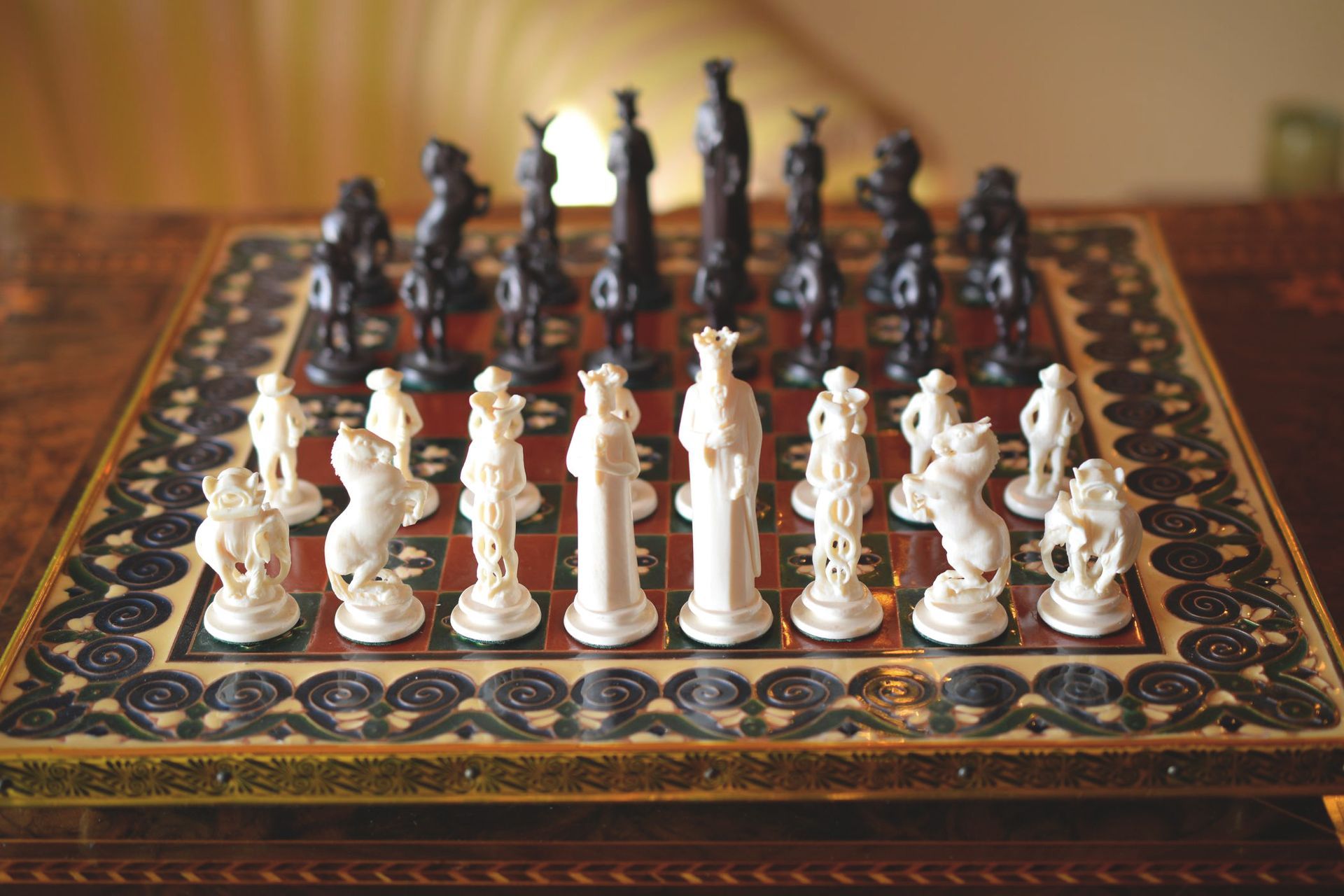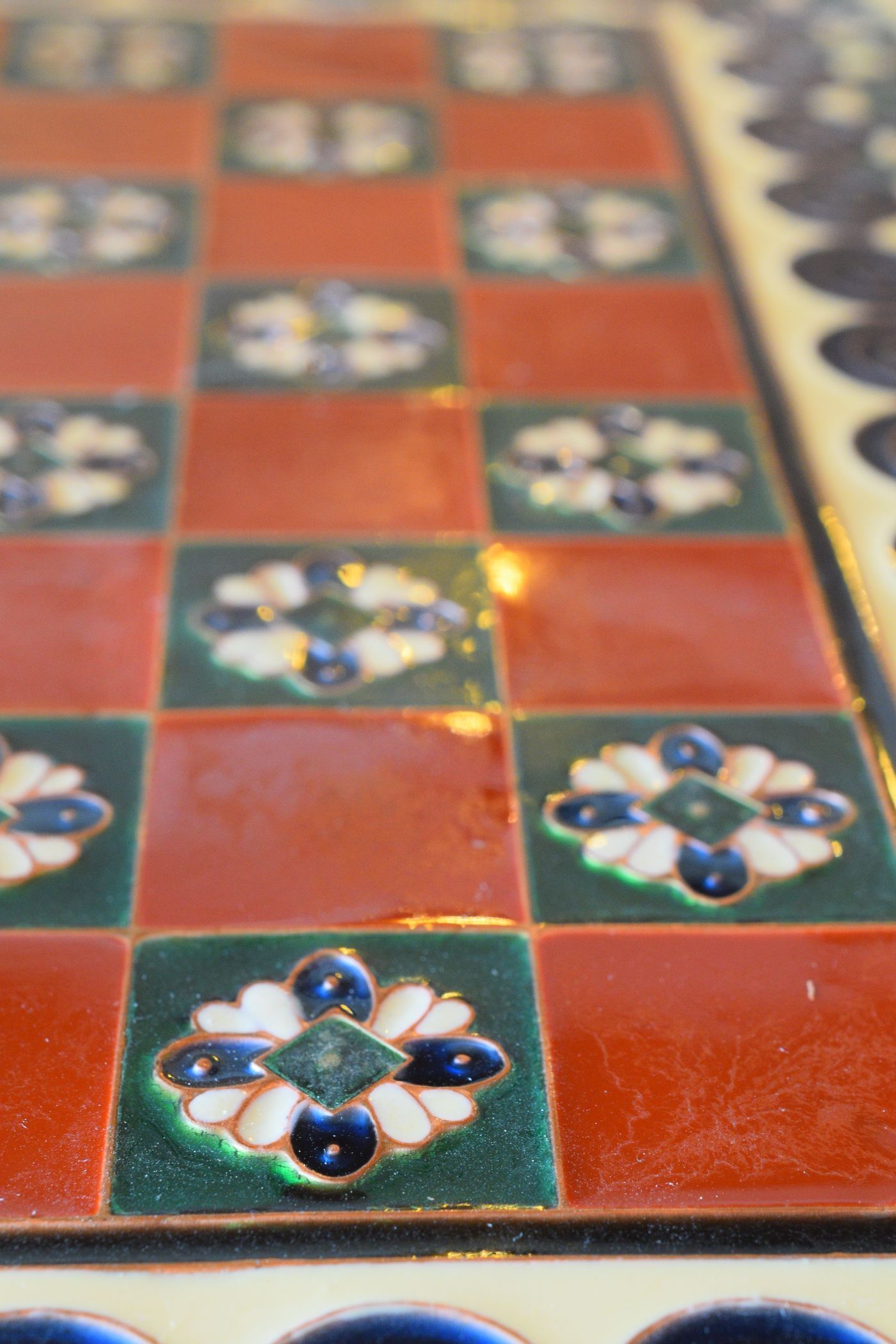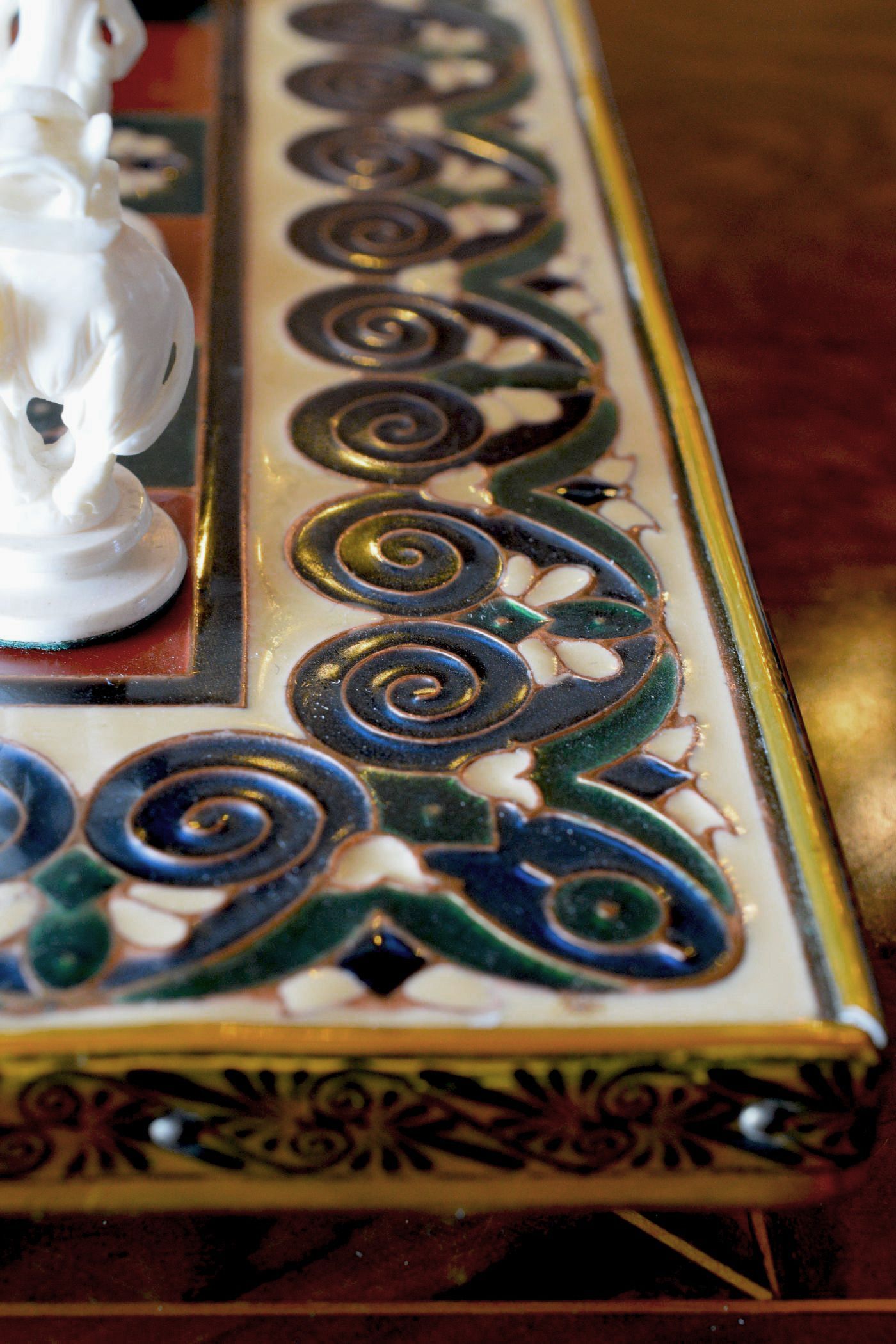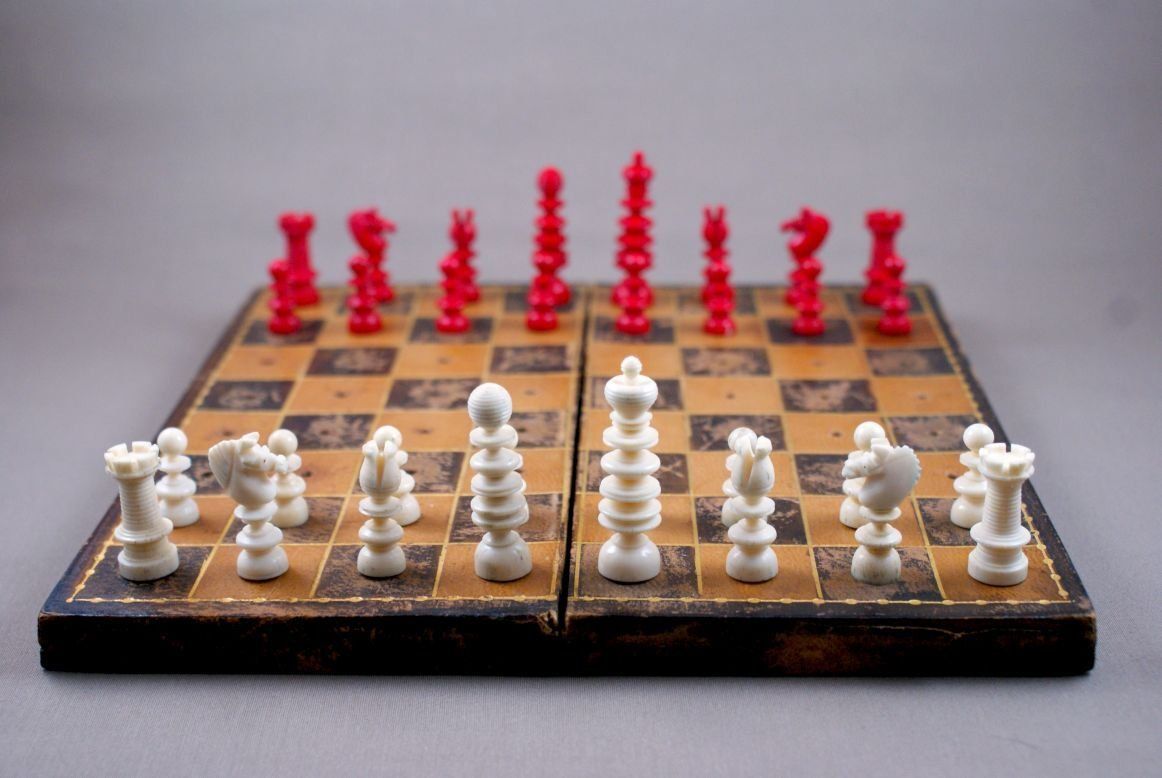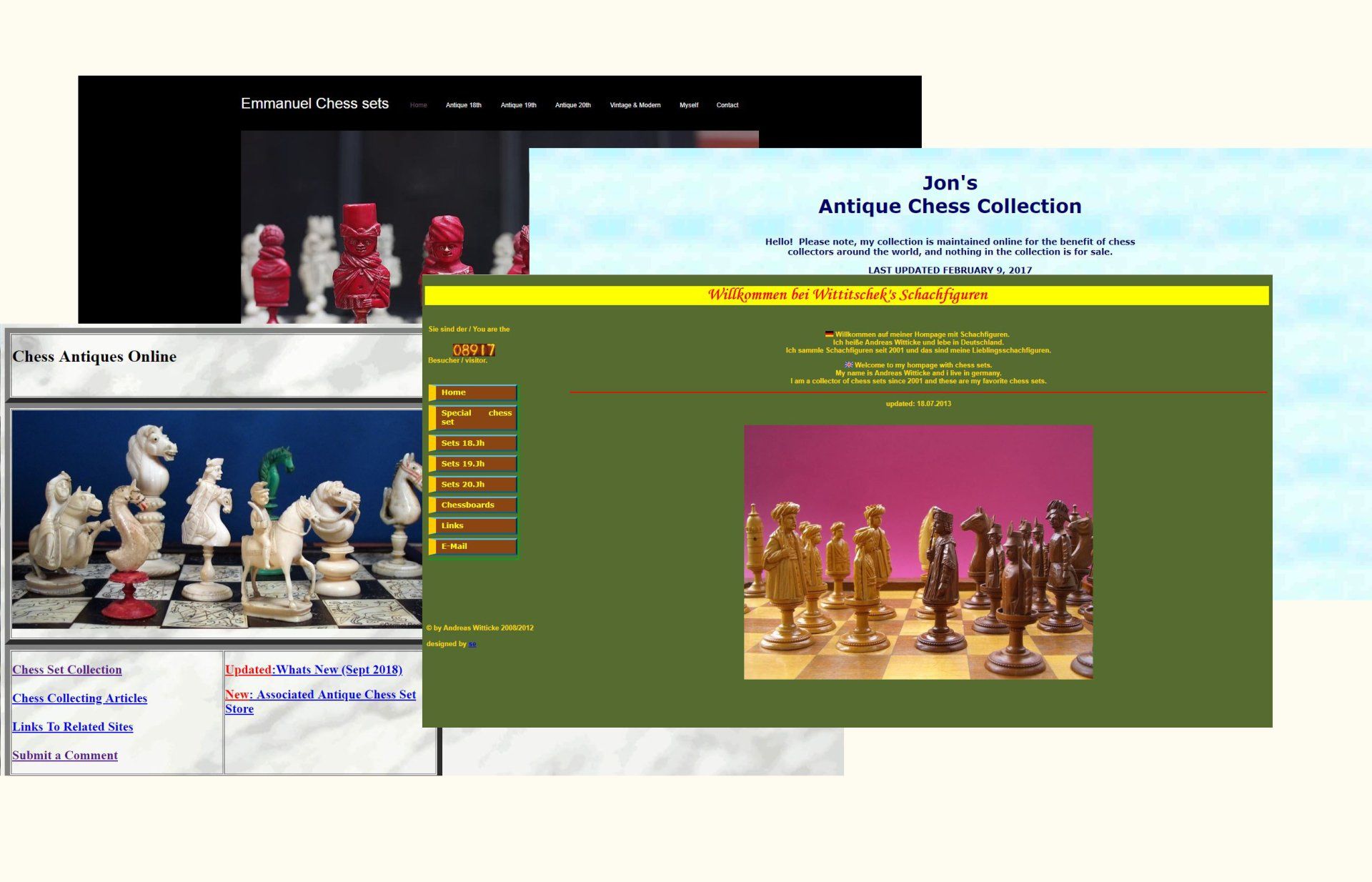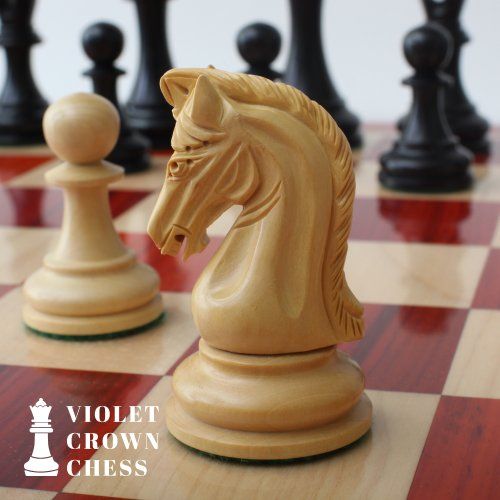French Cloisonné Chess Board, 1900-1920
An artistically decorated French cloisonné chess board in a Fin de Siècle style, somewhere between Art Nouveau and Art Déco, probably. Cloisonné is an ancient technique for decorating metalwork objects with colored material held in place or separated by metal strips or wire. It goes back to the first centuries BC, when jewellery was made with gemstones cut in shapes which were held in place by gold wires placed around them. In recent centuries, vitreous enamel has been used instead of gems. A certain shape or ornament is formed with wires on a suitable base material. The partitions (French: "cloisons") thus created are then filled with powdered glass and fired at high temperature. The powder melts, flows and then hardens to a smooth, durable vitreous coating, which is called vitreous enamel or porcelain enamel. The coating can be translucid or, as in this case, opaque.
The style of the ornaments on the board is reminding of Art Nouveau or Art Déco decorations, which may indicate that the board was created around the turn of the century. For the photoshoot I paired the board with a figural ivory chess set from approximately the same period, which was made in Erbach. More pictures of the chess set can be found
here.
